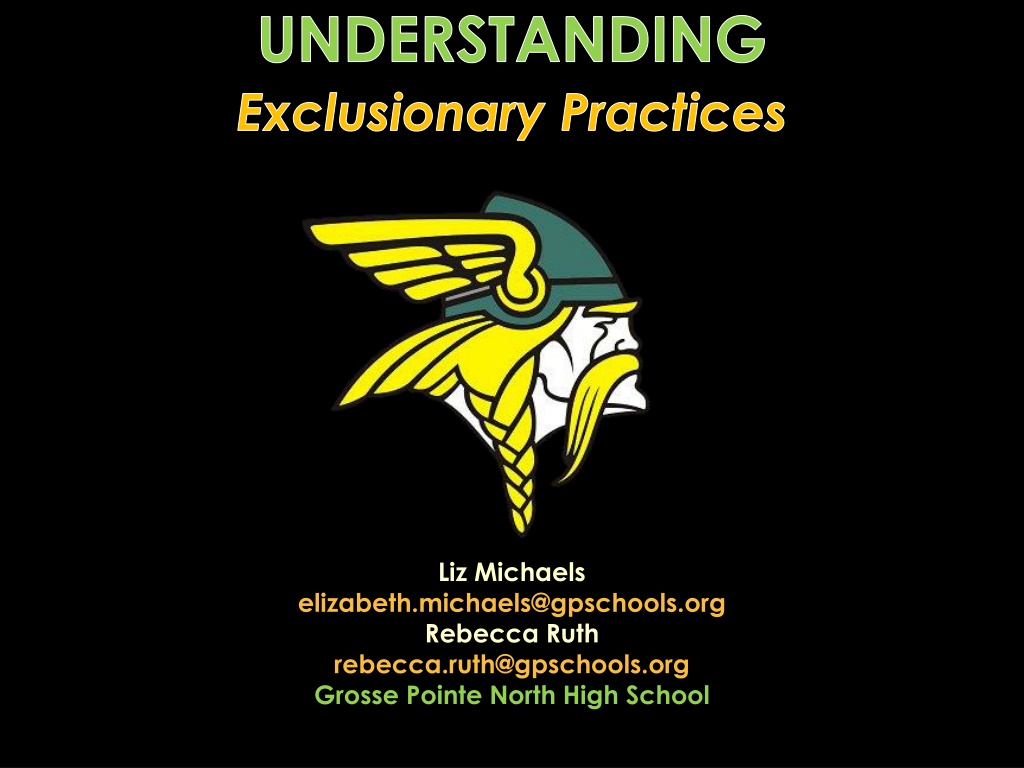
Understanding Exclusionary Practices in Education
Explore the impact of exclusionary practices on students in educational settings, the range of intensities, who is disproportionately affected, and the consequences for both students and schools. Learn about the ineffectiveness of excluding students to change behavior and discover alternative practices to address exclusion, promote access to instruction, and reduce exclusionary practices.
Download Presentation

Please find below an Image/Link to download the presentation.
The content on the website is provided AS IS for your information and personal use only. It may not be sold, licensed, or shared on other websites without obtaining consent from the author. If you encounter any issues during the download, it is possible that the publisher has removed the file from their server.
You are allowed to download the files provided on this website for personal or commercial use, subject to the condition that they are used lawfully. All files are the property of their respective owners.
The content on the website is provided AS IS for your information and personal use only. It may not be sold, licensed, or shared on other websites without obtaining consent from the author.
E N D
Presentation Transcript
UNDERSTANDING Exclusionary Practices Liz Michaels elizabeth.michaels@gpschools.org Rebecca Ruth rebecca.ruth@gpschools.org Grosse Pointe North High School
UNDERSTANDING Exclusionary Practices Today s Presentation based on An Instructional Alternative to Suspension presented by: Rhonda Nese University of Oregon Jeremy Smith Lincoln Middle School @ National PBIS Leadership Forum 10/2016
What are EXCLUSIONARY practices? Removing students from regular instruction or social environment in response to unwanted behavior.
Range of Exclusion Intensities Brief timeout from instruction Office Referral Detention Time in the hall Suspension Reflection Rooms Expulsion Seclusion Rooms
Who is Being Excluded? Disproportionately Students w/Disabilities Hispanic/Latinos African American males w/Disabilities American Indians African Americans Students in Poverty
What Students Miss When Excluded Instruction Time Social Skill Building Time Being a Part of the Learning Community
What EXCLUSION Practices Can Result In For the Student For the School Overall Achievement Chance Dropping Out in Postsecondary Enrollment Perception of School Safety Future Antisocial Behaviors
What We Know Excluding Students does NOT Change Behavior.
Practices to Consider/Develop in order to address Exclusion Define MAJOR vs. MINOR infractions Develop Continuum of Consequences Exclude only for MOST severe behaviors Provide Access to Instruction for Excluded Students Connect with students before they return.
Graduated Discipline Practices to REDUCE Exclusion Teach Appropriate Behavior Give student opportunity to self-correct Modify Assignment Teacher proximity Student Reflection (Think Sheet) Desk-Side Chat
Purpose of Separation when Necessary Interrupt problem behavior to prevent escalation. Opportunity to teach what is acceptable. Minimize likelihood that problem behavior will be rewarded. Allow education to continue for others.
ALTERNATIVES to Isolation Buddy Classrooms A quiet space in a non-distracting area Students pre-taught that the space is used for many things Students come with work Stay for 15 minutes max
Order of Events 1 Student sent out for problem behavior: Goes to office w/ referral & academic assignment 2 Triage: Is the behavior a safety concern? NO YES 3 4 Administrator Response Is the student calm, cooperative and/or wanting to go back to class? 5 6 Yes No Administrator Response InstructionalSuspension Learning Alternative
Instructional Suspension Learning Alternative Student-guided Behavior Assessment Coaching on appropriate behaviors Academic support on classroom assignment Reentry plan with rehearsal Transition supports with a reconnection conversation and/or card
Administrator Response Student-guided behavior assessment Reintegration plan Parent meeting Behavior contract Safety plan Modified schedule Detention Suspension
"No significant learning can occur without a significant relationship. James Comer, Professor of Child Psychology at Yale Image result for connection
